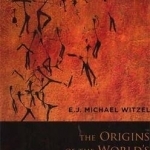The Origins of the World's Mythologies
BookThis item doesn’t have any media yet
2013 | History & Politics
In this comprehensive book Michael Witzel persuasively demonstrates the prehistoric origins of most of the mythologies of Eurasia and the Americas ('Laurasia'). By comparing these myths with others indigenous to sub-Saharan Africa, Melanesia, and Australia ('Gondwana Land') Witzel is able to access some of the earliest myths told by humans. The Laurasian mythologies share a common story line that dates the world's creation to a mythic time and recounts the fortunes of generations of deities across four or five ages and human beings' creation and fall, culminating in the end of the universe and, occasionally, hope for a new world. These stories are contrasted with the 'southern' mythologies, which lack most of these features. Witzel's investigations are buttressed by archaeological data, as well as by comparative linguistics, and human population genetics. All suggest the African origins of anatomically modern humans and their subsequent journey along Indian Ocean shores, up to Australia and southern China, around 60,000 BCE. These itinerants' early mythology survives partly in sub-Saharan Africa and points along the path - the Andaman Islands, Melansia, and Australia.
Laurasian mythology, Witzel shows, developed along this vast trail, probably in southwest Asia, around 40,000 BCE. Identifying features shared by virtually all mythologies of the globe, Witzel suggests that these features probably informed myths recounted by the communities of the 'African Eve.' As such, they are the earliest substantiation of our ultimate ancestors' spirituality. Moreover the Laurasian myths' key features, Witzel shows, survive today in all major religions and their multiple ideological offshoots.
Related Items:
| Published by | Oxford University Press Inc |
| Edition | Unknown |
| ISBN | 9780199812851 |
| Language | N/A |
Images And Data Courtesy Of: Oxford University Press Inc.
This content (including text, images, videos and other media) is published and used in accordance
with Fair Use.
